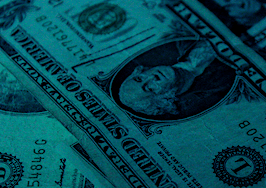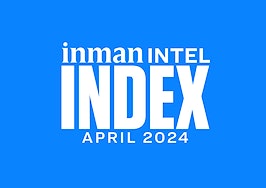The newest economic data has arrived on the slow side, and revived that awful word from the 1970s, “stagflation.”
It’s early for that bugaboo, but it is mercifully obscured by another one: “yield curve inversion.”
First the data, then define the terms, study the patterns, and make a wild guess.
Monthly orders for “durable goods” are a valid signal for business conditions, and the word from May was surprising: volatile orders for transportation aside (airplanes), the rest were projected to have grown by 0.5% in the month and instead fell 0.3%. This category is supposed to benefit from the new tax cuts and federal spending.
Friday, also from May, personal income rose 0.4% but spending only 0.2%. “Personal Consumption Expenditures,” the technical version of consumer spending has dropped from annualized 4%-ish to 3%-ish. The stagflation aspect: for the first time since 2012 the “core PCE deflator” (the Fed’s favorite measure of inflation) has risen to 2.0% year-over-year and is accelerating, Jan-Feb at 1.5%, Mar-Apr 1.8%. “Real” personal income is nominal minus inflation, and it is steadily falling, prior months revised downward.
Stagflation is very rare — a stagnating economy is incompatible with rising inflation. For inflation to rise we must have rising incomes to pull prices up. Or, as in the 1970s a catastrophic increase in the cost of a key commodity — oil leaping from $3.00/bbl to $35/bbl in just eight years, 1972-1980.
One other way to produce inflation while incomes are flat, this one of immediate concern to the Fed: the Fed and Congress shoving money into the economy to get higher growth and instead just getting higher prices.
How can this be? Look outward: global competition has capped many categories of U.S. wages no matter what the Fed and Congress do to boost growth. Pushing on the proverbial string.
Oil has risen $15/bbl in nine months to $74/bbl, but energy is excluded from “core” inflation, and the Fed tends to see small-scale energy spikes and ramps as transients not affecting the deep structure of prices. Rising oil also tends to hurt consumers.
Taking all of that in, if you’re the Fed you feel confirmed in gradual rate hikes: inflation is the enemy, and unsustainable growth must slow.
Now shift signals! To this inversion business. That term, together with “flattening yield curve” refers to a closing spread between long-term yields and short-term ones, which when reaching upside-down conclusion has accurately predicted recessions. All of them.
For civilians: long-term rates should always be higher than short-term ones because risks expand with time. The mechanism for short rates to rise above long: a central bank hiking short-term rates until the economy cracks.
The long-short spread this week reached its narrowest since the last recession, the 2-year T-note at 2.52% and the 10-year at 2.84% — just 32 basis points apart. When the Fed hikes two more times and if long-term rates stay put as they have since February, we’ll be inverted. Will that mean recession soon?
The Fed yesterday posted a short internal paper titled “(Don’t Fear) The Yield Curve.” With a title like that, prudence would be to sell everything and move far away. This time I think the conclusion may be correct, but the method in the paper is the very worst of the Fed. Quantism. On Wall Street a “quant” is a well-educated genius engaged in “quantitative analysis” to find mathematic convergences. These correlations do work in trading until they end in seismic error (see Long Term Capital Management 1998, whose warnings we ignored and gave us 2008). An except from the “(Don’t Fear)” paper:
The forward rate at a given maturity can be thought of as a gauge of the market’s expected short rate at that horizon, plus a term premium. On the other hand, because a bond’s yield is an average of the forward rates over the term of a bond, yields tend to dull the signal embedded in forward rates. The near-term forward spread we focus on is the difference between the current implied forward rate (on Treasury bills) six quarters from now and the current yield on a three-month Treasury bill….
Oy. Instead of quantism, stick with plain sight. The Fed begins to hike the cost of money when the economy grows beyond capacity, and intensifies the hikes at signs of overheating. When the Fed makes the turn from stimulus to tightening, long-term rates jump faster than the Fed out of fear for how high the Fed may go. Then the two rise together until another magic moment — the Fed keeps going up, but long-term rates stop. Inversion end-game.
Do long rates stop rising, as now, in anticipation of recession? Most bond traders and salesmen would argue otherwise: as the Fed pushes up the whole rate structure, long-term yields become irresistible to buyers. The buyers are predicting the past: they see deals better than any in the prior several years — just as now, a 3.00%-paying 10-year last available seven years ago.
Meanwhile the Fed continues to hike because it takes time for hikes to slow the economy. The Fed always overshoots, with the best of intentions but slightly panicky about inflation. The most powerful hike-to-effect lag: housing feels rate hikes first, but the labor market — central to inflation-fighting — takes a year or two to roll over. Hence repeated massacres of housing. (Note: on the far side of the recession as rates fall, housing recovers quickly but jobs don’t, so the Fed overdoes its backside easing.)
Friday’s stalled long-term rates and incipient inversion are a false signal, and complicate the Fed’s life. Long rates are clearly pulled down by global ones, German 10s 0.304%, Japan’s 0.032%. The bond market response to Fed hikes is all screwed up: the Fed has hiked 1.75% since December 2015, and the 10-year T-note since then has risen only one-third as much, from 2.30% to roughly 2.90%. Mortgages are up from the 3.50% all-time lows, but the pre-hike centerline was closer to 4.00%, and Friday’s 4.75% is not slowing anything.
The Fed always has trouble, but this predicament is new: long rates staying down are canceling the effect of hikes in short-term rates, not at all a traditional flat-curve warning to the Fed that it is going too far. The Fed does need to slow the U.S. economy back to 2% GDP or so, but if long rates stay down then short rates have a long way to go up. No market is prepared for that possibility, quickly becoming probable.
US 10-year T-note, stuck since February:

The Fed-predictive 2-year T-note has stalled for two months, most likely a mis-pricing which may also have overseas roots:

The newest economic data has ker-plunked the Atlanta forecast, but from sky-high to sensible:

The ECRI is always less hysterical than other measures, and has the economy in remarkably steady growth above the fed’s target and oblivious to the Fed’s hikes:











